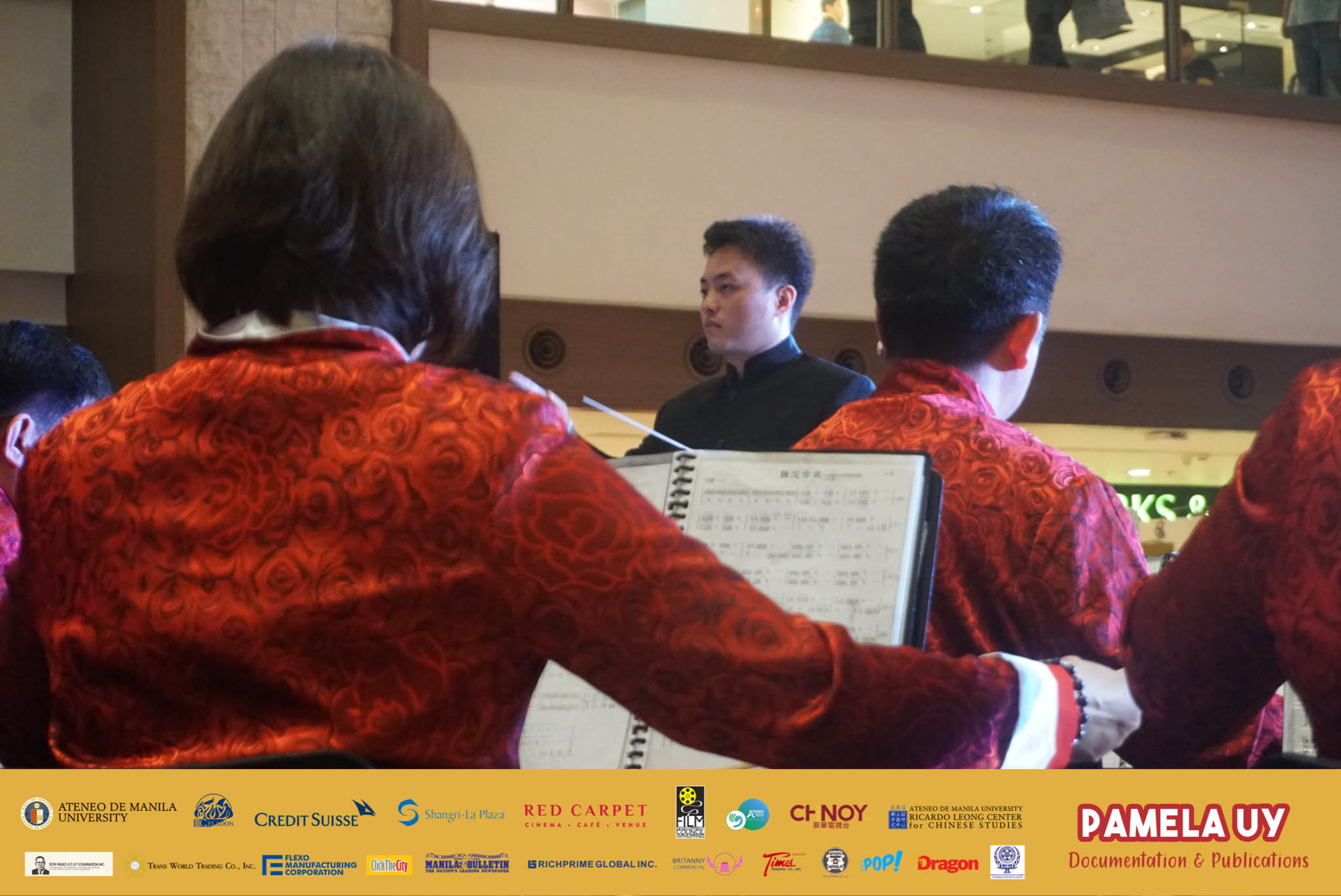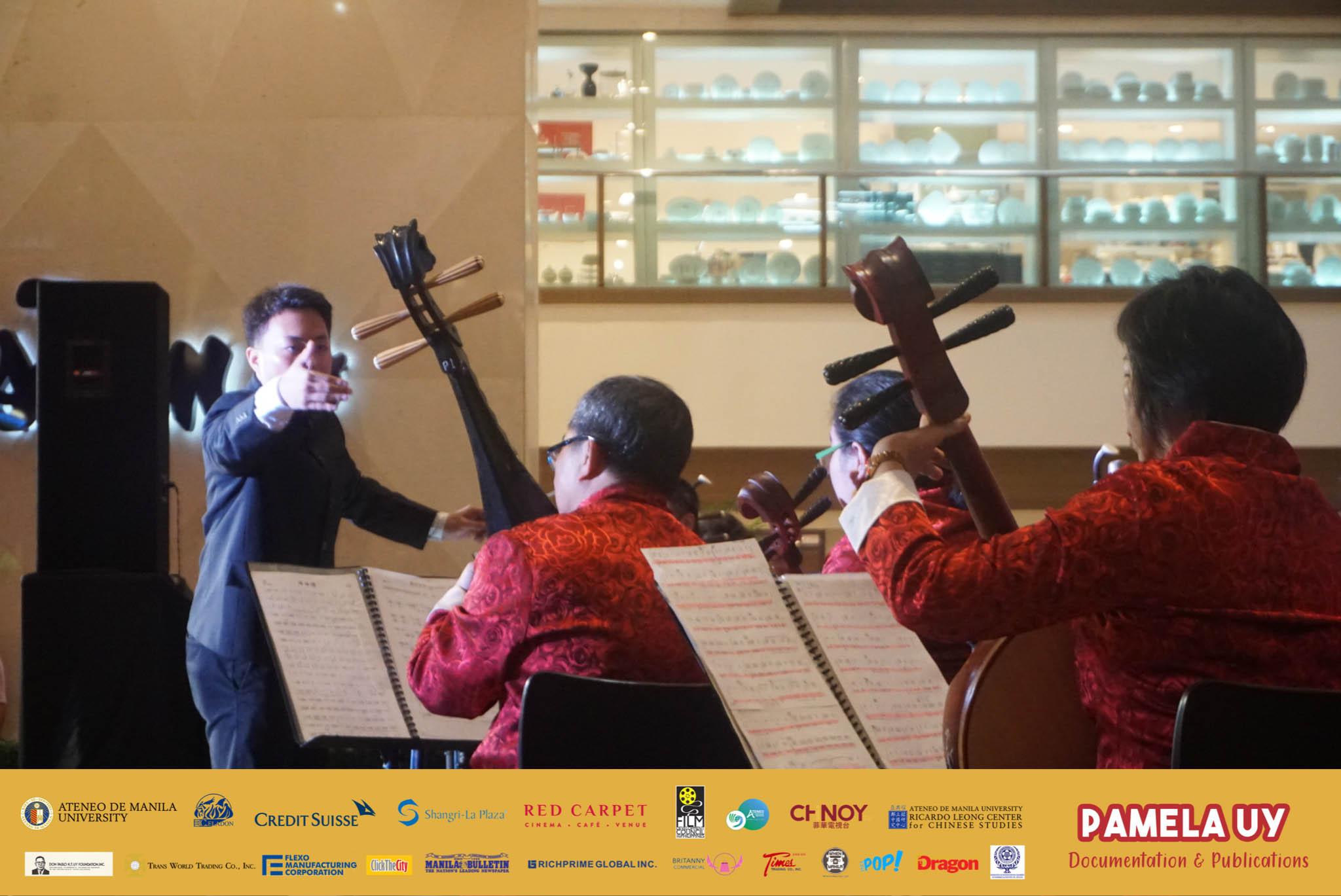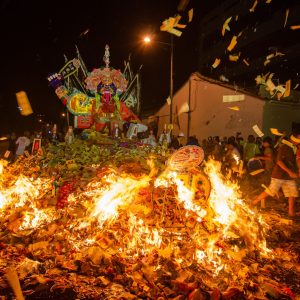Written by Jethro Cullen Sia
Edited by Patrick Ang and Aaron Medina
Photos by Sherwayne Cai and Pamela Uy
Crowds of guests filled EDSA Shangri-La’s Grand Atrium. Listening to the relaxing and sophisticated Chinese music being played by the Philippine Cultural College Chinese Orchestra, others walking by couldn’t help but glance at the melodious instruments and bright Chinese costumes of those playing the instruments.
Earlier this year, the Ricardo Leong Center for Chinese Studies and the Shangri-La Plaza organized a Chinese Musical Concert, as part of the wider Spring Film Festival event.

The atrium overflowed with people as the concert started with a lion dance performance. The orchestra used a variety of Chinese instruments like the pipa, a pear-shaped lute, and jinghu, a two-stringed fiddle. Both are rarely used or even displayed here in the Philippines. Everything—the lion dance, the music, and the ambiance of the whole event—was stirring and sensational.
There’s more to the Chinese Musical Concert than just the excitement, however; it would be good to talk about significance. Classical Chinese songs are more than just mere tones that sound well on string; they are stories in themselves. Each of them has a unique story, background, and message—stories that range from ancient imperial China to the Chinese Civil War. These are the stories that bring the Chinese community in the world to where they are today. As these stories developed the different Chinese values and principles, they also define the contemporary Chinese-Filipino.
One example is “采茶灯 (Cǎi chá dēng)”, a tea harvesting song. Written 270 years ago, the melody of the song reflects the sentiment of farmers as they harvest tea leaves—it is one of camaraderie. The orchestra performed it exceptionally.

Sadly, a lot of people don’t understand or appreciate the music, the art, and even the culture in general. This lack of understanding or appreciation for the aforementioned was likely seen when the guests of the Chinese Musical Concert left little by little until the atrium felt somehow empty in the middle of the orchestra’s performance. Some of those who stayed fell asleep or started to use their gadgets.
Amidst all this lack of appreciation, there is—most probably—no one to blame, but there is definitely something that needs to be improved or changed. This problem is rooted in the lack of, or worse, the absence of quality Chinese art, culture, and history education here in the Philippines. This calls for awareness to be raised among Filipinos—especially the Chinese-Filipino community—on matters regarding Chinese culture, art, and music. This need calls for more events like this Chinese Musical Concert, which, in some ways, brings people to a unique and unusual world of tones and stories.
In a community where people are continuously losing and changing their identity, Chinese-Filipinos must, at the very least, remember and understand their culture and their stories. Events like the Chinese Musical Concert are very significant in the fulfillment of this mission because they let people—everyone, not only the Chinese and Chinese-Filipinos—remember the existence of Chinese culture and what it is. By not appreciating events like those of the Chinese arts, Chinese-Filipinos don’t allow themselves also to appreciate or even try to understand their culture, and by not appreciating their own culture, they don’t appreciate their own identities.





